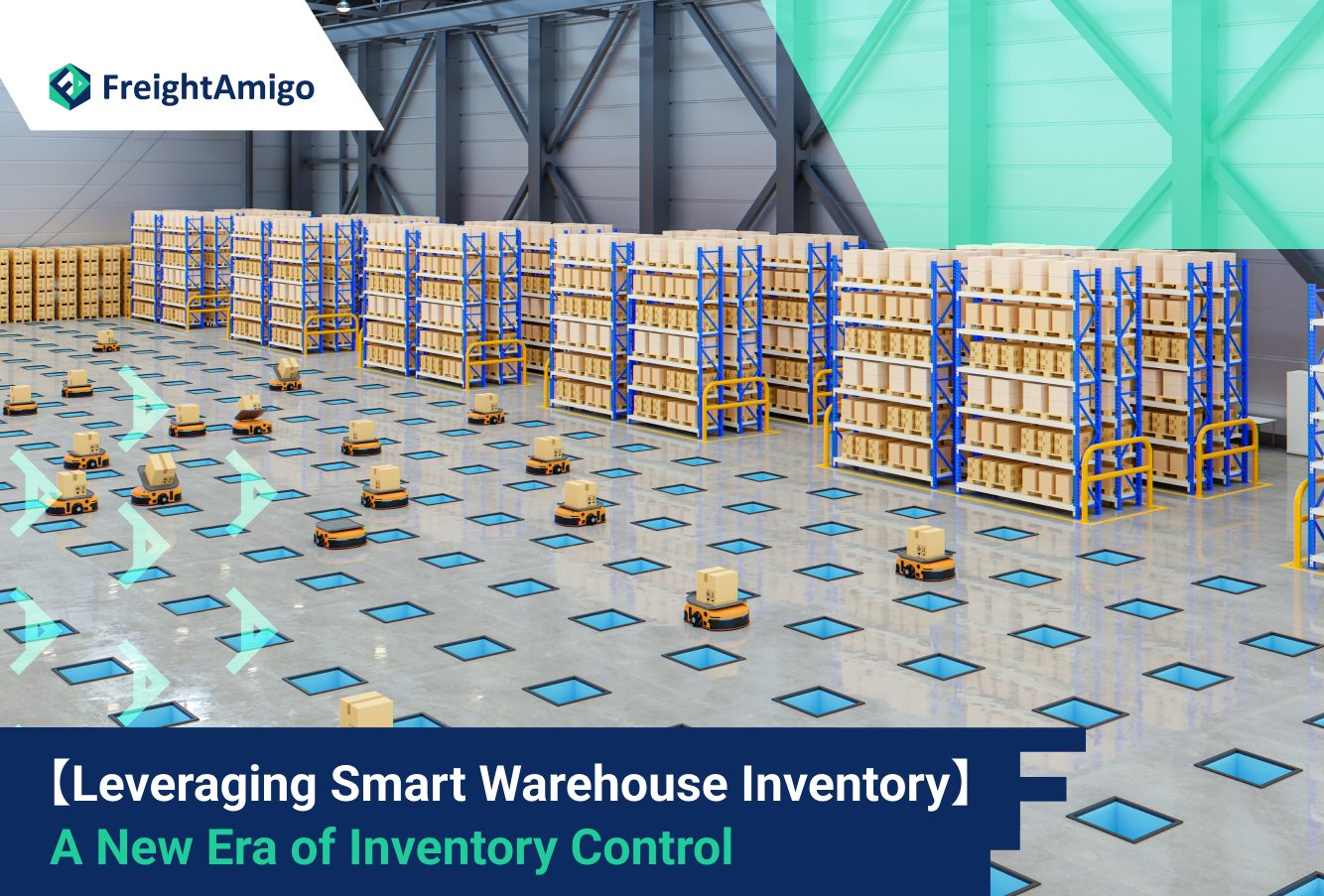Author Name: Tiffany Lee – Marketing Analyst at FreightAmigo
In today’s competitive and fast-paced business environment, the significance of smart warehouse inventory management cannot be understated. As a key player in the supply chain process, a well-optimized warehouse can significantly enhance a company’s operational efficiency, profitability, and customer satisfaction. However, managing a warehouse is no small feat – it involves a complex web of activities, from receiving goods to order fulfillment, and everything in between. This is where a Warehouse Management System (WMS) comes into play.
Want To Compare The Best Express, Air Freight, Sea Freight, Rail Freight & Trucking Rates So As To Have Better Control On Cost?
Understanding Warehouse Management Systems (WMS)
A Warehouse Management System (WMS) is a software solution designed to optimize warehouse operations. It offers real-time visibility into inventory levels and their movements within the warehouse, thus enabling warehouse managers and operators to make informed, data-driven decisions about inventory control, labor management, and resource allocation.
In essence, a WMS is the linchpin of a smart warehouse inventory system. It automates numerous manual processes, reduces human errors, and significantly enhances efficiency. It’s the key to unlocking a new level of inventory control and warehouse management.
The Vital Role of WMS in Modern Supply Chains
In the contemporary supply chain ecosystem, WMSs play an indispensable role. They serve as a critical tool for managing order fulfillment processes, from receiving raw materials to shipping finished goods. A WMS ensures that these processes are carried out smoothly by tracking inventory and ensuring that goods are stored, sorted, shipped, and tracked accurately.
Moreover, WMSs are often used in conjunction with other related systems, such as ERP (Enterprise Resource Planning) and TMS (Transportation Management Systems), to enable better coordination of the inbound and outbound logistics tasks. This integration ensures that the right product gets to the customer on time, thereby enhancing customer satisfaction and brand reputation.
How WMS Streamlines Warehouse Processes
A comprehensive WMS streamlines all the key warehouse processes, resulting in increased operational efficiency and reduced costs. Here’s how:
Inventory Management
Through automated data collection systems, a WMS enables effective control over inventory movement. It uses automatic identification data capture (AIDC) systems such as barcoding and RFID (Radio Frequency Identification) to ensure that goods can be easily located when needed.
Task Management
Task management is another critical feature of a WMS. It automates and optimizes task assignments, reducing wasted time and effort. Warehouse staff use “task interleaving” to complete tasks in a logical sequence, such as replenishment, put-away, cycle counts, and picks. This significantly increases worker efficiency.
Traceability
Product traceability is an essential feature of a WMS. It provides full product visibility, tracking location and status at any point in the process – from receipt of materials to manufacturing, assembly, packaging, warehousing, shipping, and final customer delivery.
Labor Management
A WMS can help optimize labor management by providing real-time visibility into labor requirements and availability. This enables supply chain managers to allocate resources more efficiently, allowing them to meet their KPIs (Key Performance Indicators) with fewer workers.
Shipping and Returns Management
A WMS simplifies shipping and returns management by automating the processes. It enables the WMS to send bills of lading ahead of the shipment, generate packing lists and invoices, and send advance shipment notifications to recipients. For returns, the WMS provides an efficient and accurate returns process, reduces inventory shrinkage, and minimizes the costs of these operations.
WMS and the Advent of Smart Warehouse Inventory
With the advent of advanced technologies like cloud computing, Internet of Things (IoT), and AI, warehouse management has witnessed a paradigm shift. Today’s WMSs are not just about managing inventory but about creating a smart warehouse inventory system.
A smart warehouse inventory system leverages these advanced technologies to automate warehouse operations, improve efficiency, and generate real-time data insights. This not only streamlines the inventory control process but also enables warehouse managers to make data-driven decisions, giving them a competitive edge in the market.
Choosing a WMS: Factors to Consider
Choosing a WMS is a critical decision that can significantly impact your warehouse operations and overall business performance. Here are some key factors to consider when choosing a WMS:
Integration Capability
A good WMS should seamlessly integrate with your existing ERP system, eCommerce platforms, and other business applications. This ensures smooth data flow and enhances operational efficiency.
Mobile-readiness
In today’s mobile-centric world, having a mobile-ready WMS is a must. It should be accessible, legible, and usable across all mobile devices, enabling warehouse operators to manage operations on the go.
Customization Options
Every business has unique needs. Therefore, your WMS should offer customization options to fit your unique operational requirements.
Flexibility and Scalability
As your business grows, your WMS should be able to adapt and scale to meet your growing needs and requirements.
User Interface and Learning Curve
A WMS with a user-friendly interface and minimal learning curve ensures quick adoption and maximizes productivity.
Conclusion: Embracing Smart Warehouse Inventory
Embracing smart warehouse inventory with the help of a robust WMS is the way forward for businesses looking to optimize their warehouse operations. A WMS not only streamlines warehouse processes but also provides real-time visibility into inventory levels, enhances labor management, and improves shipping and returns management. With the right WMS in place, businesses can achieve operational efficiency, reduce costs, and enhance customer satisfaction – paving the way for sustainable growth and success.
There Are Different Options For Cargo Transportation. If You Want To Choose The Most Convenient And Suitable Solution, It Is Best To Have The Full Support Of Logistics Experts! If You Are Planning To Ship Goods Overseas, Please Go To The FreightAmigo Page For Inquiries.
===
Read More:
【Cosmetic Product Recycling】 A Guide to Sustainable Reverse Logistics
【Rise of Green Supply Chain】 Pioneering Sustainable Practices in Logistics
【ESG in Logistics】 How ESG Practices Drive Social Responsibility in Logistics
===
If you have any inquiries on logistics/supply chain, feel free to contact FreightAmigo now:
Chat with us online OR
Phone : +852 28121686
WhatsApp: +852 27467829









































